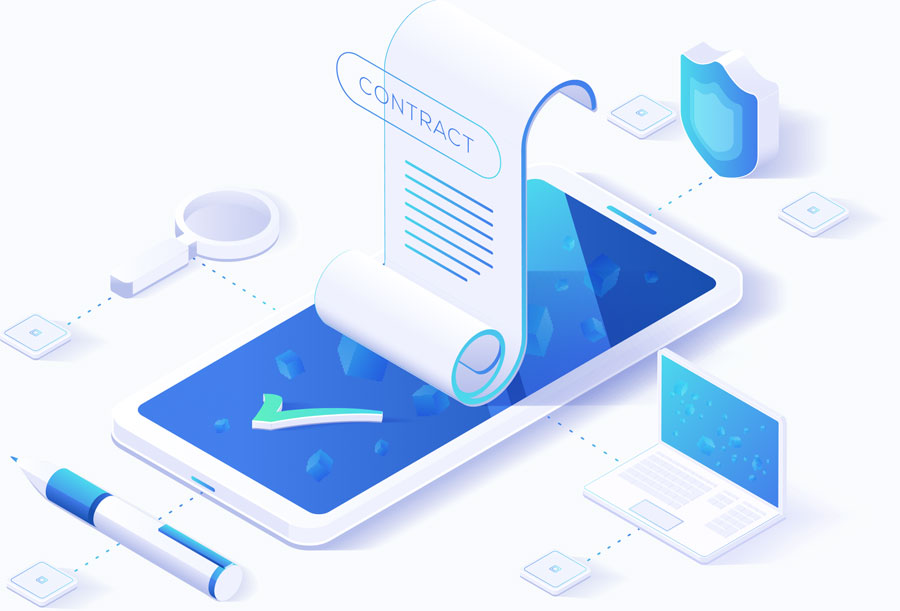Digital Marketing Q&A Hub
Instead of spending hours searching for answers across multiple sites, find everything you need in one place. We’ve done the legwork for you.

340+
Online Courses

200+
Instructors

100%
Certification

9k+
Memberhsip
What You’ll Find Here
Our Q&A page is designed to be your ultimate resource for all things digital marketing, specifically tailored for various industries. Here’s what you can expect:
Industry-Specific Questions & Answers
Whether you’re in real estate, travel, healthcare, or another field. We’ve compiled answers that address your unique pain points and challenges
Expert Insights & Practical Tips
Benefit from our wealth of knowledge, where we share not just what works but also why it works. Our expert insights are backed by data and real-world examples, making them relatable and actionable.
Time-Saving
Instead of spending hours searching for answers across multiple sites, find everything you need in one place. We’ve done the legwork for you.
Community & Support
Easily customize every aspect of your list from widget styles but also you can give custom colors to each item as well.

Silo 1: Industry-Specific Q&A
Lorem ipsum dolor sit amet, consectetur adipiscing elit. Ut elit tellus, luctus nec ullamcorper mattis, pulvinar dapibus leo.
Let's Start
Real Estate Marketing Q&A
Real estate agents who add value with tailored property insights, market analysis, and neighborhood guides on their websites typically see a 30% increase in inquiries, as these resources drive organic leads through SEO.
Focus on adding city-specific keywords in your property listings, write location-based blog posts, and ensure Google My Business is optimized. These three steps alone can push your site up by 15-20 spots locally.
Facebook and Instagram have shown to convert better due to their advanced targeting options. Facebook ads for real estate listings yield a 2-3x higher conversion rate than standard organic posts.
To maximize engagement, add interactive hotspots, a live Q&A during the tour, and follow up immediately after with personalized offers. This process increases virtual tour-to-close rates by up to 45%.
Over 80% of clients look for reviews when choosing an agent. Encourage reviews with automated post-transaction emails, and a well-reviewed profile can drive a 30% boost in inquiries.
Allocate 50% of the budget to local keywords, 30% to retargeting, and 20% to A/B testing new copy. This structure often increases the ROI for real estate Google Ads campaigns by over 60%.
Utilize social media ads targeting local demographics, which can increase leads by up to 30%. Optimize your website with SEO-rich content about properties to boost organic traffic by 50%. Network at community events to build relationships and gain referrals.
Yes, effective marketing is essential for real estate; it can increase visibility by up to 70%, build brand credibility, and attract potential clients. Proper marketing strategies can elevate your sales by as much as 200% compared to agents who don’t market actively.
Real Estate Marketing Q&A End
TRAVEL & TOURSIM Q&A
se demographic targeting to focus on age, income level, and interests like “luxury travel.” Campaigns with these segments achieve up to 3x the return in high-spend bookings.
Instagram generally outperforms Pinterest by about 40% in engagement for travel content due to its Stories feature, which allows for quick updates and interaction.
Automate alerts for price drops and last-minute availability on wish-listed destinations. These emails have a 25-30% higher open rate, encouraging spontaneous bookings.
Travel brands using UGC see a 20% rise in engagement rates. Encourage travelers to tag and share their experiences, then feature this content in marketing channels.
Travel marketing is essential as it drives awareness and demand for destinations, helping businesses attract more visitors. Effective marketing strategies can increase bookings by 30% and enhance customer loyalty by 40%, ultimately boosting revenue and supporting local economies.
Offering “off-peak” packages with exclusive local experiences boosts occupancy by up to 50%. Pairing these offers with regional ads can draw nearby travelers.
A travel marketer promotes destinations, services, and experiences to attract travelers. They utilize data-driven strategies and social media to boost brand awareness, potentially increasing bookings by 40% and customer engagement by 50%.
The 4 A's of tourism marketing are Attraction (unique experiences), Accessibility (ease of travel), Accommodation (where to stay), and Amenities (services and facilities). Focusing on these can enhance visitor satisfaction and drive repeat business by 30%.
Tourism marketing involves promoting travel destinations and services to attract tourists. Key features include targeted advertising, customer segmentation, and content marketing. Effective strategies can improve destination visibility by 60% and increase visitor conversion rates by 25%.
Tourism marketing enhances brand visibility, attracts diverse audiences, and boosts local economies. By implementing effective marketing strategies, businesses can see an increase in foot traffic by 50% and a rise in overall revenue by 20%.
Travel and Tourism Marketing Q&A End
Restaurant Marketing Q&A
Offer exclusive discounts or menu items for direct orders and highlight these on your social channels and website. This approach can save up to 30% in commissions while driving loyalty.
Offer weekday specials and use geo-targeted ads with “dine-in tonight” offers. Restaurants using this strategy often see a 20-25% increase in foot traffic on slower days.
Create incentives for reviews, like 10% off their next visit. A strong review base can drive a 35% increase in new customer visits.
Reservation options increase conversion rates on mobile traffic by 18% and reduce wait times, enhancing customer experience and encouraging repeat visits.
Marketing is crucial for restaurants as it builds brand awareness and attracts new customers. Effective marketing strategies can increase customer footfall by 25% and drive repeat visits by 35%, ultimately enhancing profitability.
Restaurants typically allocate 3-6% of their revenue to marketing, depending on their size and goals. This investment can yield a return on investment (ROI) of 4:1, meaning every dollar spent could generate four dollars in revenue.
A well-designed menu can serve as a powerful marketing tool by showcasing signature dishes, highlighting specials, and incorporating engaging descriptions. This approach can boost average order value by 15% and enhance customer experience, encouraging repeat business.
Menus attract customers by featuring appealing visuals, emphasizing popular items, and creating a sense of urgency with limited-time offers. An effective menu design can increase sales of featured items by up to 20%, driving higher overall revenue for the restaurant.
Restaurant Marketing Q&A End
HEALTHCARE MARKETING Q&A
Ensure local SEO optimizes around specific treatments and link your Google My Business listing to relevant pages. Local practices using this method see a 40% increase in appointment bookings.
SMS and email reminders have shown to reduce no-shows by 35-50%, particularly when sent 24 and 2 hours before the appointment.
Content should be actionable and informative, focusing on patient concerns. Practices that provide FAQ pages see up to 60% higher patient engagement.
Streamlining appointments online reduces administrative time by 25% and increases patient satisfaction, as it allows 24/7 accessibility.
In healthcare, marketing involves promoting services, building trust, and educating patients about treatment options. Effective healthcare marketing can increase patient engagement by 40% and improve overall satisfaction scores.
Medicine marketing refers to strategies used by pharmaceutical companies to promote drugs and medical products to healthcare professionals and consumers. Successful campaigns can lead to a 25% increase in product awareness and prescription rates.
Direct-to-consumer (DTC) marketing in healthcare involves promoting medical services or products directly to patients without intermediary healthcare providers. DTC strategies can enhance patient access by 30% and increase brand loyalty.
The best example of direct marketing is personalized email campaigns targeting patients with relevant health information, special offers, or reminders. These campaigns can achieve an open rate of 20-30%, significantly improving patient engagement and retention.
Healthcare Marketing Q&A End
E-COMMERCE MARKETING Q&A
Market your e-commerce store by utilizing social media advertising, email campaigns, and search engine optimization (SEO) to drive targeted traffic. Effective strategies can boost online sales by up to 20% within the first month.
Key components include SEO, content marketing, social media engagement, email marketing, and targeted advertising. A well-rounded strategy can enhance customer acquisition by 50% and increase repeat purchases.
To increase online sales, optimize your website for user experience, offer personalized promotions, and utilize retargeting ads. These tactics can lead to a 30% uplift in conversion rates and higher customer satisfaction.
Social media serves as a platform for brand awareness, customer engagement, and driving traffic to your store. Brands leveraging social media effectively can see a 25% increase in sales directly from these channels.
Email marketing provides personalized communication, fosters customer loyalty, and drives repeat sales. On average, businesses can achieve a return of $42 for every $1 spent on email marketing, highlighting its effectiveness.
The 5 C's include Customer, Cost, Convenience, Communication, and Content. Focusing on these elements can enhance user experience and increase conversion rates by 30%.
The 4 Ps are Product, Price, Place, and Promotion. Optimizing these factors can lead to improved market positioning and up to a 40% increase in sales efficiency.
The best marketing for e-commerce includes a mix of SEO, & Facebook Ads. This integrated approach can enhance visibility and drive a 50% increase in online traffic.
E-commerce Marketing Q&A End
Silo 2: General Digital Marketing Q&A
Lorem ipsum dolor sit amet, consectetur adipiscing elit. Ut elit tellus, luctus nec ullamcorper mattis, pulvinar dapibus leo.
Let's Start
Social Media Marketing Q&A
Social media marketing involves using platforms like Facebook, Instagram, and Twitter to promote products and engage with customers, essential for brand visibility.
Key performance indicators (KPIs) such as engagement rate, reach, conversion rate, and follower growth help assess the effectiveness of your social media campaigns.
Focus on platforms where your target audience spends the most time. For B2B, consider LinkedIn; for B2C, Instagram and TikTok are increasingly effective.
Posting 3-5 times a week is ideal for most platforms; however, quality content should take precedence over quantity to maintain audience interest.
Video content, live streams, and interactive posts (polls, quizzes) typically drive higher engagement rates, as users seek dynamic and entertaining experiences.
A content calendar outlines your posts, themes, and publishing schedule, helping to maintain consistency and strategic alignment with marketing goals.
Target specific demographics, use compelling visuals, and A/B test your ads to optimize performance while staying within budget constraints.
Algorithms determine which content appears in users' feeds; understanding them can help optimize your posts for better visibility and engagement.
Social Media Marketing Q&A End
Search Engine Optimization (SEO) Q&A
SEO is the practice of optimizing your website to rank higher in search engine results, driving organic traffic, and increasing brand visibility.
Use tools like Google Keyword Planner or SEMrush to identify relevant keywords with high search volume and low competition, guiding your content strategy.
Key on-page factors include title tags, meta descriptions, header tags, and keyword density, all contributing to your page's relevance and ranking potential.
Local SEO focuses on optimizing your online presence for local searches, using Google My Business, local citations, and geo-targeted keywords to attract nearby customers.
Generally, it takes 1-to-3 months to see significant changes in rankings and traffic, but this timeline can vary based on competition and optimization efforts.
Implement responsive design, optimize images for faster loading, and ensure easy navigation to enhance the mobile experience, catering to a growing audience.
Search engines use complex algorithms to evaluate and rank content based on relevance, quality, and user engagement, which evolve frequently to improve search results.
SEO copywriting combines writing compelling content with keyword optimization, ensuring that your copy resonates with both readers and search engines.
Search Engine Optimization (SEO)
Content Marketing Q&A
Content marketing is a strategic approach focused on creating valuable content to attract and retain a clearly defined audience, ultimately driving profitable customer action.
Define your audience, set clear objectives, choose content formats, and create a distribution plan, while continuously analyzing performance for optimization.
Consider producing blogs, videos, podcasts, infographics, and webinars, tailored to your audience's preferences and the platforms you utilize.
User-generated content builds community and trust, showcasing authentic experiences with your brand that can lead to higher engagement and conversions.
Transform blogs into videos, create infographics from research findings, or compile podcast episodes into eBooks, maximizing the value of your existing content.
Create high-quality, visually appealing content that resonates with your audience's interests, and include clear calls to action encouraging shares.
Use social media, email newsletters, partnerships, and SEO to distribute your content effectively, reaching a wider audience and enhancing engagement.
Storytelling engages audiences emotionally, making your brand more relatable and memorable, leading to higher retention and conversion rates.
Content Marketing Q&A End
Pay-Per-Click (PPC) Advertising Q&A
PPC advertising is a model where advertisers pay for each click on their ads, allowing for immediate visibility in search engines and social media platforms.
Google Ads uses an auction system where advertisers bid on keywords; successful bids, ad relevance, and quality scores determine ad placement.
PPC offers immediate traffic, precise targeting, measurable results, and the ability to control budgets, making it an effective tool for lead generation.
Start with a budget of $500 to $1,000 monthly, adjusting based on performance metrics, industry benchmarks, and your overall marketing goals.
Compelling ad copy can significantly improve click-through rates (CTR) and conversions, emphasizing clear calls to action and relevant benefits.
A landing page is the destination for your PPC ads, designed to convert visitors into leads or customers; it should be relevant and user-friendly.
Avoid poor keyword selection, neglecting ad copy quality, ignoring analytics, and failing to optimize landing pages, as these can lead to wasted budgets.
Use tools like Google Ads and Google Analytics to monitor metrics such as impressions, clicks, conversions, and ROI, enabling data-driven decisions.
Pay-Per-Click (PPC) Advertising Q&A End
Email Marketing Q&A
Email marketing involves sending targeted messages to a group of subscribers to promote products, share news, or build relationships, driving engagement and sales.
Use lead magnets, social media promotions, and website sign-up forms to encourage subscriptions, ensuring compliance with regulations like GDPR.
Send promotional emails, newsletters, event invites, and personalized messages to keep your audience engaged and informed about your offerings.
Maintain consistency with 1-4 emails per month, adapting frequency based on subscriber feedback and engagement metrics to avoid overwhelming recipients.
Craft compelling subject lines, segment your audience for tailored content, and send emails at optimal times based on your audience's behavior.
Monitor open rates, click-through rates, conversion rates, bounce rates, and unsubscribe rates to gauge the effectiveness of your campaigns.
A/B testing allows you to compare different email versions to identify what resonates best with your audience, optimizing future campaigns for better performance.
Use responsive design, clear CTAs, and visually appealing layouts to ensure emails are engaging and accessible on various devices.
Email Marketing Q&A End
Silo 3: Additional Resources Q&A
About Our Marketing Services Q&A
SEO, PPC, social media marketing, email marketing, etc. Each service is tailored to maximize your ROI.
Absolutely! Our strategies are designed to cater to both residential and commercial real estate, ensuring that we meet the distinct needs of each sector for maximum impact.
We conduct thorough market research to understand your target audience and local trends, then customize our strategies—whether it’s SEO, content, or social media—to effectively reach and convert leads into clients.
Yes, we optimize listings and create targeted campaigns for platforms like Zillow and Realtor.com, ensuring your properties stand out to potential buyers and drive more inquiries.
We conduct a comprehensive analysis of your goals and audience, creating a multi-channel strategy that drives high-quality leads.
We ensure channels work together, using social media to drive traffic to your website, where email sign-ups nurture potential buyers.
We use Google Analytics, Ahrefs, and Hootsuite for real-time performance tracking and strategy optimization.
Our team stays updated through industry conferences, webinars, and data analytics, ensuring our strategies remain effective.
About Our Marketing Services Q&A End
About Our Results and ROI Q&A
Clients typically see a 30-50% increase in leads within three months, directly impacting sales.
We track lead conversion rates, website traffic, and customer engagement, providing monthly reports for transparency.
We focus on cost per lead, conversion rates, and return on ad spend (ROAS) to gauge campaign effectiveness.
Initial improvements in traffic and inquiries are expected within 30 days, with significant results in 3-6 months.
We provide detailed reports showcasing how marketing investments translate into revenue growth and lead generation.
Expect weekly email updates and monthly strategy calls to keep you informed and involved.
You’ll receive monthly comprehensive reports detailing performance, insights, and recommendations.
Yes, you’ll have a dedicated account manager to ensure personalized service and quick responses.
About Our Results and ROI Q&A End
About Budget and Costs Q&A
Pricing is tailored, offering flat fees for projects or retainer models for ongoing services.
Potential additional costs include advertising spend and third-party tools, clearly outlined in our proposal.
We maximize ROI by optimizing campaigns, ensuring your budget generates high-quality leads.
Yes, our services are fully customizable to align with your unique objectives and market conditions.
We have deep understanding of your industry and we not just focus on services like others we ensure you achieve your dream goal and overcome your challanges and for this we utilize various type of AI technology and advanced marketing strategies that MCdonald, Nike and other big industries used.
Yes, we offer trial periods and flexible month-to-month contracts for new clients.
If you’re unsatisfied, we’ll work closely with you to adjust strategies and meet your expectations and for this we offer 1 revesion.
Yes, we provide training sessions to ensure your team can effectively use the implemented tools.
About Budget and Costs Q&A End
Get In Touch
Contact Us
Lorem ipsum dolor sit amet, consectetur adipiscing elit. Ut elit tellus, luctus nec ullamcorper mattis, pulvinar dapibus leo.
Office Mail
Truxhomeoffice@mail.com
Office Number
+1-(903) 482-5172
Office Address
2601 Beaumont Ave Liberty, Texas
Appointment
Let's Start Project

Stay Up-to-Date on AI Trends and Insights
Lorem ipsum dolor sit amet, consectetur adipiscing elit. Ut elit tellus, luctus nec ullamcorper mattis,
